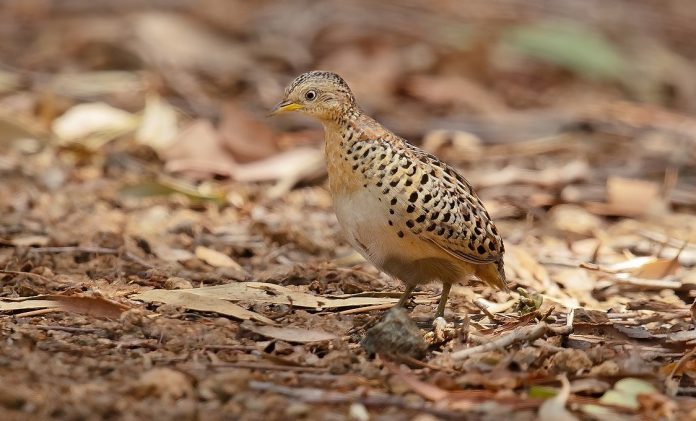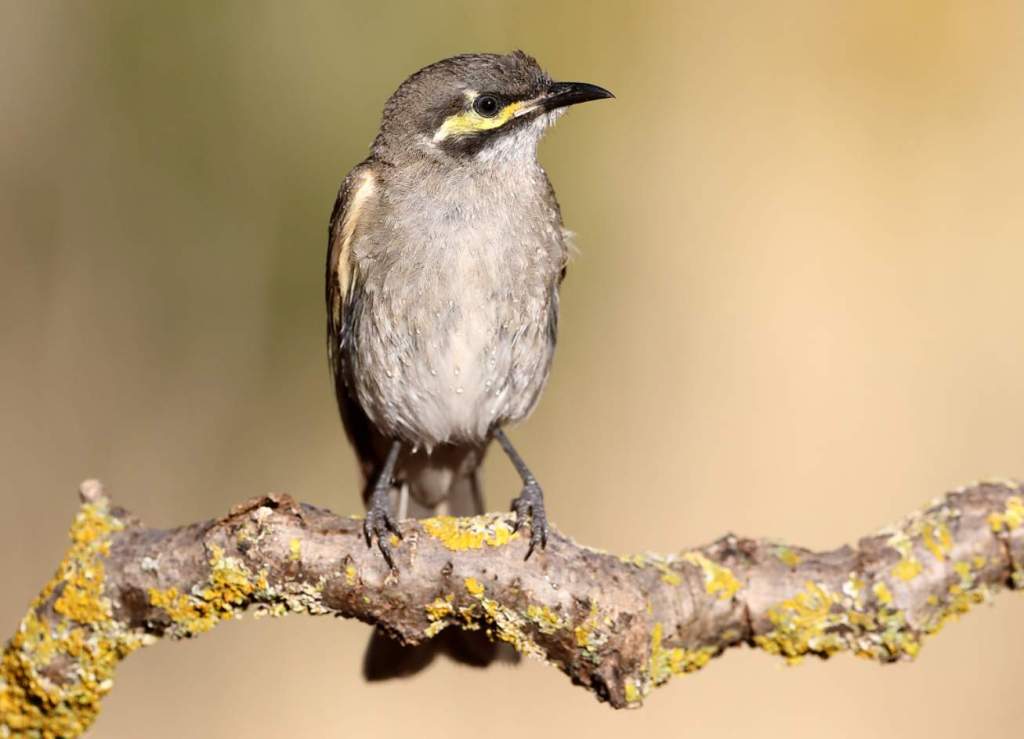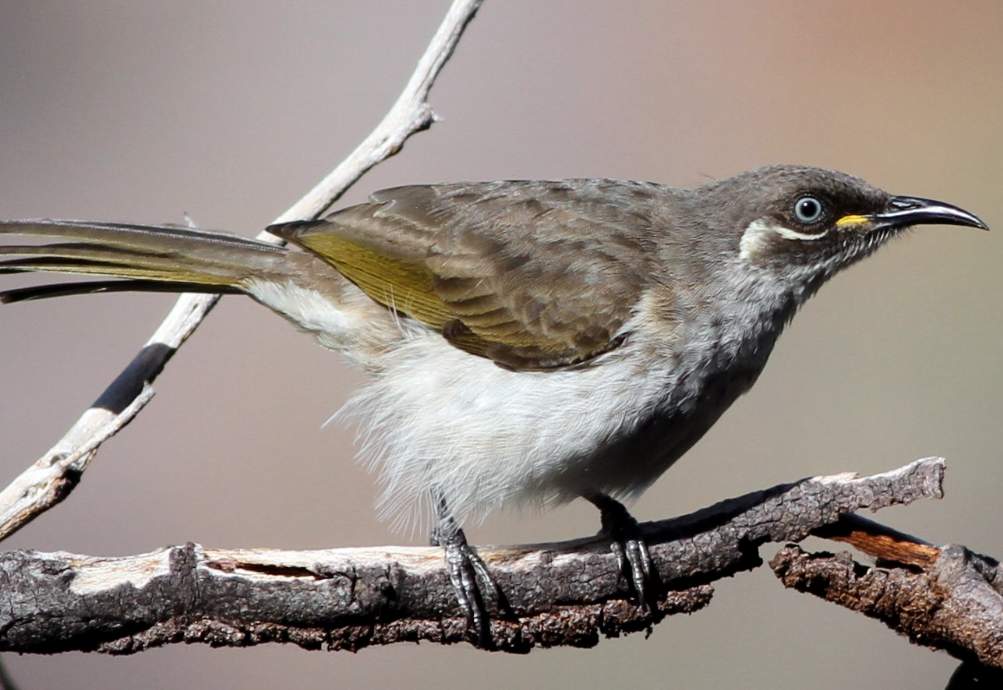The female of Red-backed Button-quail is, as with other buttonquail, polyandrous, mating with itinerant males each breeding season and never pairing with any. She is also larger and more richly colored than the males and, true to the group, dominates courtship. Males take on incubation and the rearing of young unaided.

The young are precocial and mature quickly, running from the nest straight after hatching and flying within a week or two; some reach sexual maturity in four months. Red-backed Button-quail have arisen from rail- and crane-like ancestors and resemble true quail only through evolutionary convergence, by adapting to the same lifestyle.
Like true quail, they are small, plump, short-tailed birds that live and nest on the ground in rank herbage and grass fields and have dappled, autumn-toned plumage that camouflages them well. With seven species, they are also more diverse in Australia than anywhere else in the world. Despite their superficially quail-like appearance, button-quail have a number of structures and behaviors that reveal their true ancestry.
Apart from the form of their nostrils, palate, and leg bones, they have—unlike true quail-no hind toe, no crop, and only a single row of scales down both faces of the tarsus. Conventional sexual roles are also reversed in inbreeding; the female booms in courtship, and there is no crowing from males. The red-backed Button-quail is the smallest of Australia’s buttonquail and among the least frequently seen.
Either in pairs or family coveys of five-eight, they live in damp rank grassland and dense herbage, whether in small pockets or extensive stands. Such habitat lines the edges of water channels and covers swamps and seasonally flooded pans. Where it is permanent, the button-quail is fairly sedentary, but where it is subject to seasonal fluctuations, the birds seem to be nomadic.
Across coastal northern Australia, they are still moderately abundant year-round, but on the east coast, they appear to have come and gone much over the years. A population around Sydney in the late 1800s seems to have disappeared, but since then the birds have appeared erratically in numbers in eastern Queensland and bred as far south as Finley in the Riverina, New South Wales.
Transient individuals from islands in Torres Strait indicate movement to New Guinea and cast doubt on races described from that island. Although a seed- and greens-eater like other button-quail, the red-backed has a particularly fine and acute bill and takes a higher proportion of insects. Unobtrusive inhabits, it hides or ‘freezes’ when approached and flushes only when close-pressed.
Then it rarely flies far, on fluttering wings, before dropping to cover. It is also known as a red-backed quail or a black-backed quail. The size of a red-backed button-quail is about: 120–130 mm; for females. The male bird is crown-dark with paired blackish stripes separated by a central white line. The rest of the upper surface is gray-brown, with each feather clearly marked with black and edged buff Wings gray-brown, the shoulders tawnier with black flecking.
Face buff Throat white, grading to tawny over breast and flanks, then white on belly; sides of breast and flanks barred with short black scallops. The eyes are cream-white, and the bill is dull gray. Feet are bright yellow; along with claws and horns. Old or breeding birds are tawnier to light rufous up to the throat and hind neck; the upperparts are deeper, duller, and smoother.
Female: Like male, but the upper parts are deeper and duller, with less distinct black marks and buff edges to feathers. The breast is more extensively tawny, extending over the throat, sides of the neck, and flanks with a rufous tone. Old or breeding bird’s deeper russet over the throat, and around the neck, breast, and flanks; the bill turns yellowish. The immature is similar to adults; paler; eyes duller. However, the downy young bird is dusky above with central and lateral pairs of cream stripes; buff-brown below.
Red-backed Button-quail Females who repeat a loud coo rapidly for considerable periods of time may serve to attract males and advertise breeding territory. A red-backed button-quail male is usually silent. The nesting and breeding season starts in October–July, when there is the maximum amount of insect life to feed young.
Nest a hollow depression under a tuft of grass, lined with fine grass; surrounding grass stems are bent and woven to form a canopy or dome with an entrance on one side. Eggs are usually four; dull-white, minutely speckled, and marked with brown and sometimes grey; oval to pyriform, about 22 x 18 mm.
The first eggs in the clutch are usually larger than the others. The incubation period is about 14 days for the male. Red-backed buttonquail is common in coastal northern Australia. In eastern Australia, it occurs sporadically along the coast and near the inland and may be highly nomadic according to food supplies. Occasionally ranges south to the south coast of New South Wales, Riverina, and central Victoria. It also occurs from the Philippines to New Guinea and the Solomon Islands. There are no races in Australia.
Related Reading: Jungle Bush Quail







